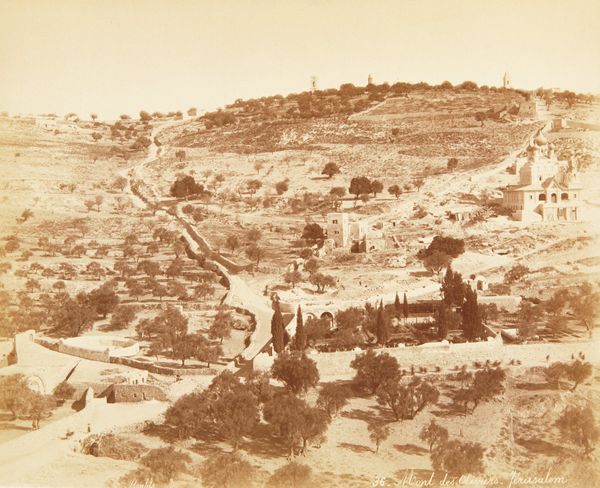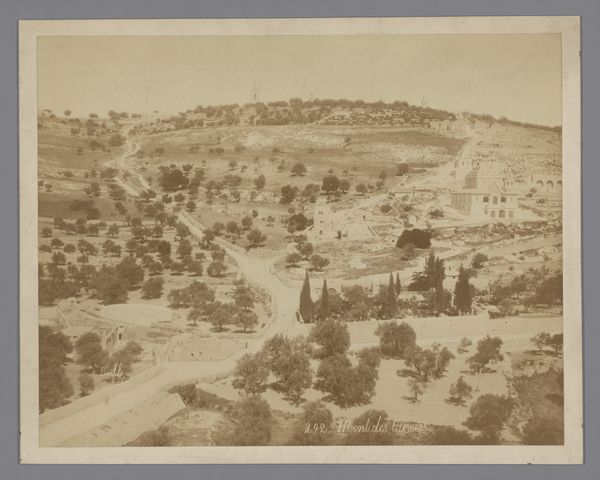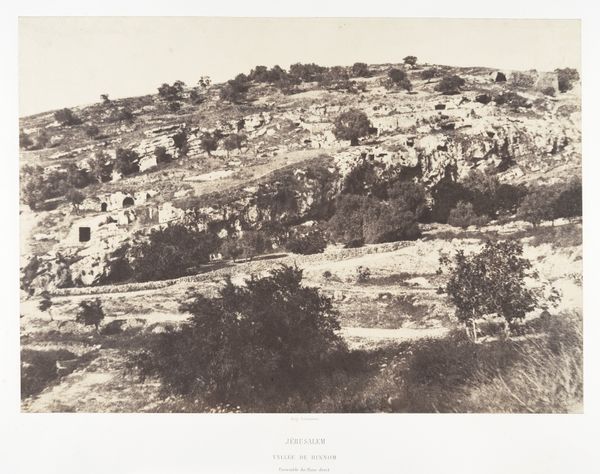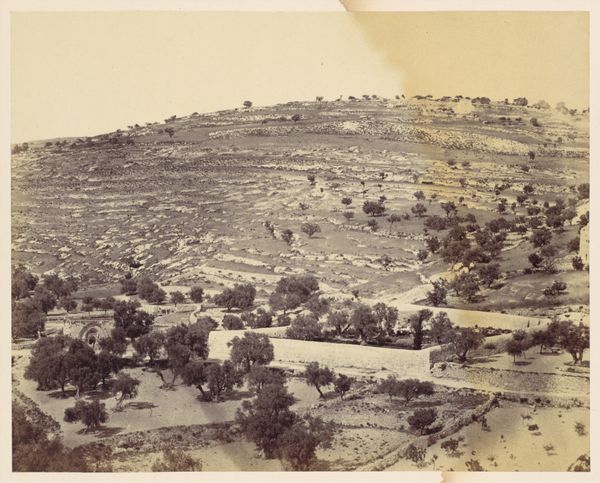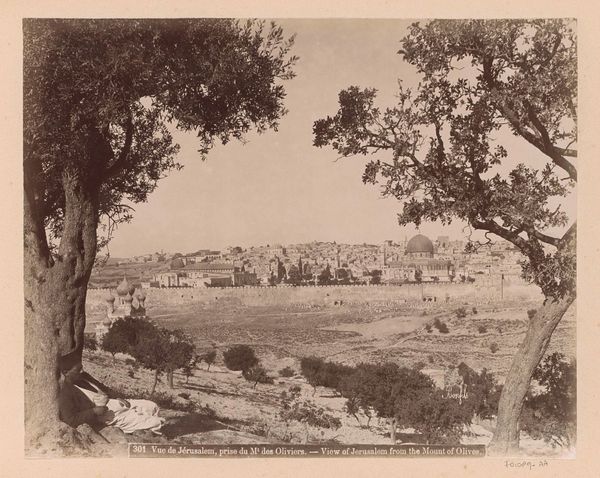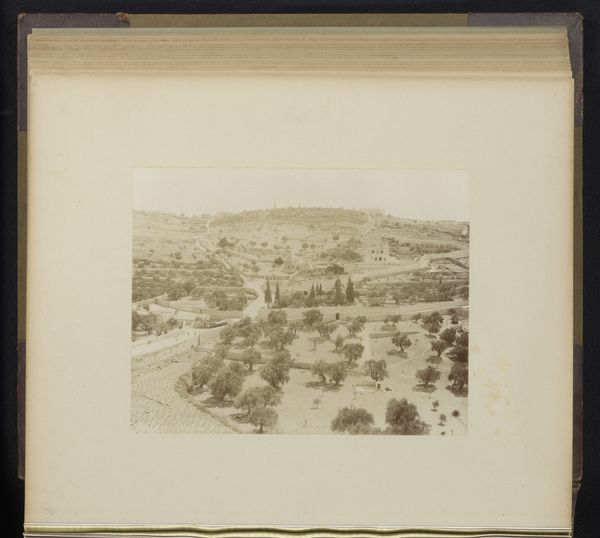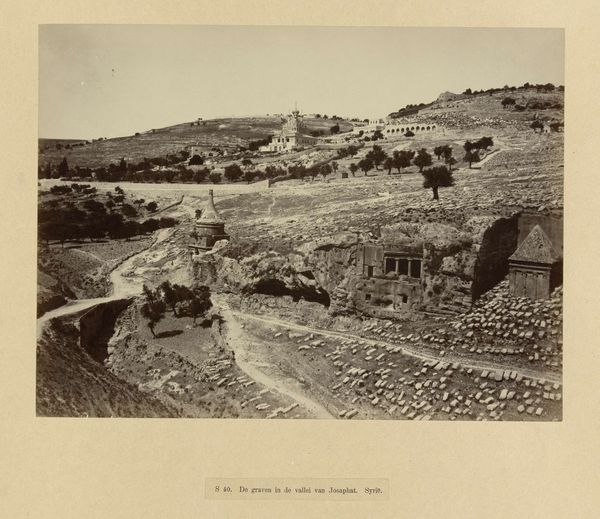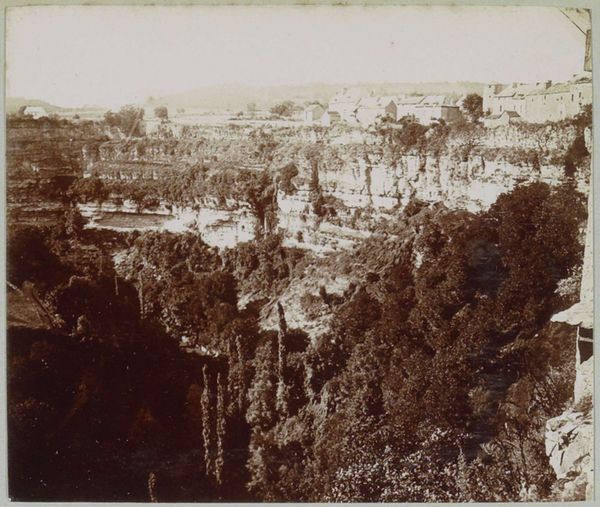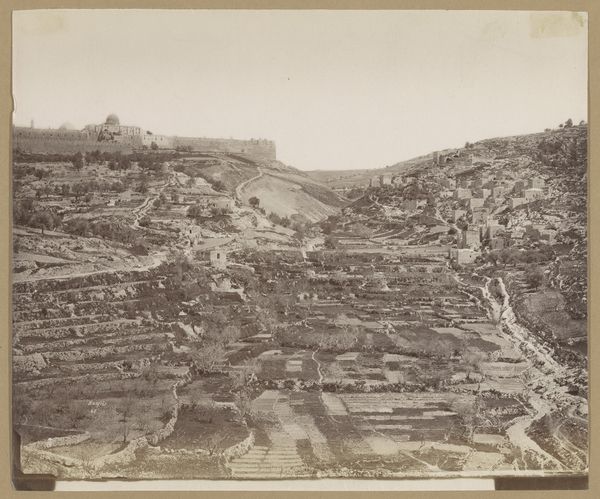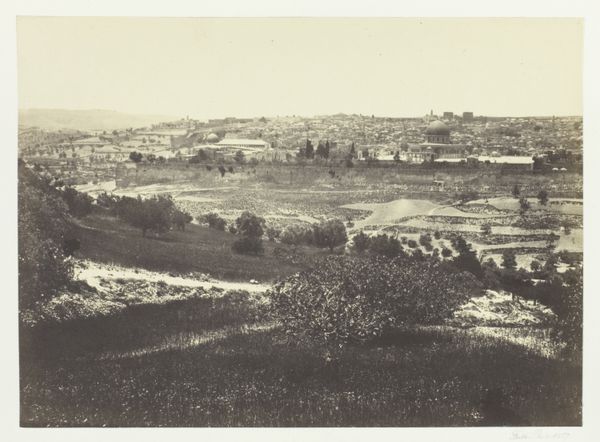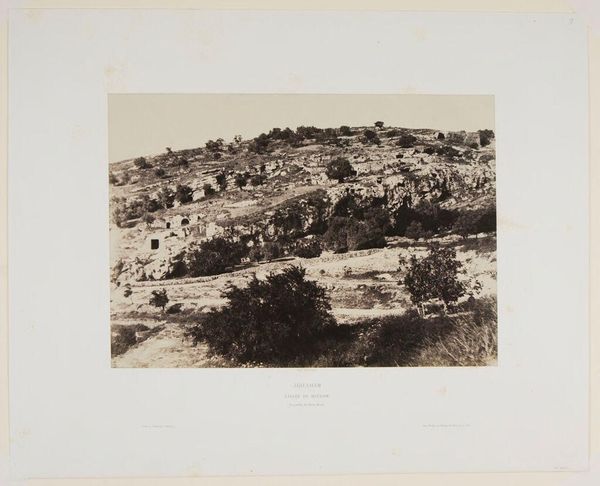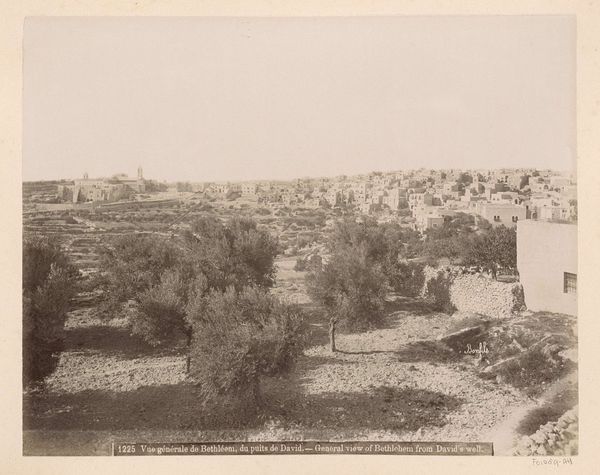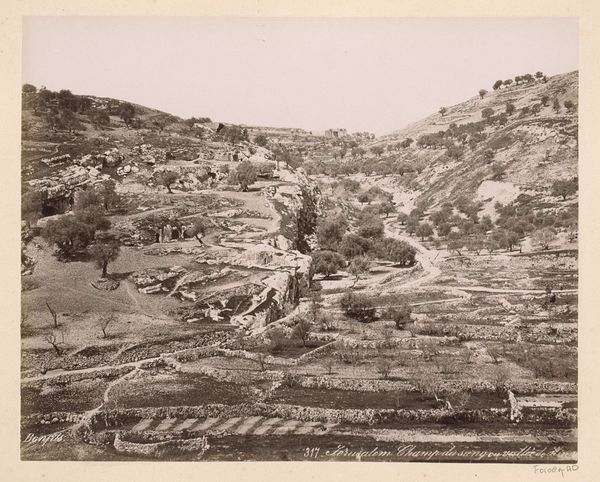
photography, albumen-print
#
landscape
#
photography
#
orientalism
#
cityscape
#
albumen-print
Dimensions: height 223 mm, width 281 mm
Copyright: Rijks Museum: Open Domain
Editor: This albumen print, "Gezicht op de Olijfberg in Jeruzalem" or "View of the Mount of Olives in Jerusalem" by Maison Bonfils, dates from around 1867 to 1895. There's something so still about this image. What social narratives do you see at play here? Curator: This photograph transports us to a fascinating intersection of Orientalism and early documentary photography. Bonfils, as a Western photographer, framed the Middle East through a lens heavily influenced by European expectations and colonial perspectives. What do you notice about the composition? Editor: Well, the winding roads draw your eye upwards toward the buildings and towers at the top. There are some people visible but they're quite small and somewhat blurred, overshadowed by the landscape itself. Curator: Exactly. Consider who is centered and who is marginalized. This composition invites us to question whose story is being told, and from whose vantage point. How might this image have been used to reinforce certain power dynamics between the West and the East? Editor: I guess it could promote a Western, colonial view that diminishes the local inhabitants and emphasizes the 'exotic' landscape for Western consumption? Almost like staging a scene. Curator: Precisely! And this highlights the vital role photography played in constructing and circulating particular understandings of the 'Orient' during this era, perpetuating stereotypes. Thinking about contemporary viewers, how do we challenge that reading? Editor: By acknowledging that history and thinking critically about the image’s original intent, while also appreciating it as a historical document and… maybe reconsidering landscape photography altogether! I hadn't considered the potential political dimensions. Thanks for sharing! Curator: Indeed! It shows us how a seemingly simple landscape photograph can be a potent site for examining complex social and political histories. Always question the frame.
Comments
No comments
Be the first to comment and join the conversation on the ultimate creative platform.
